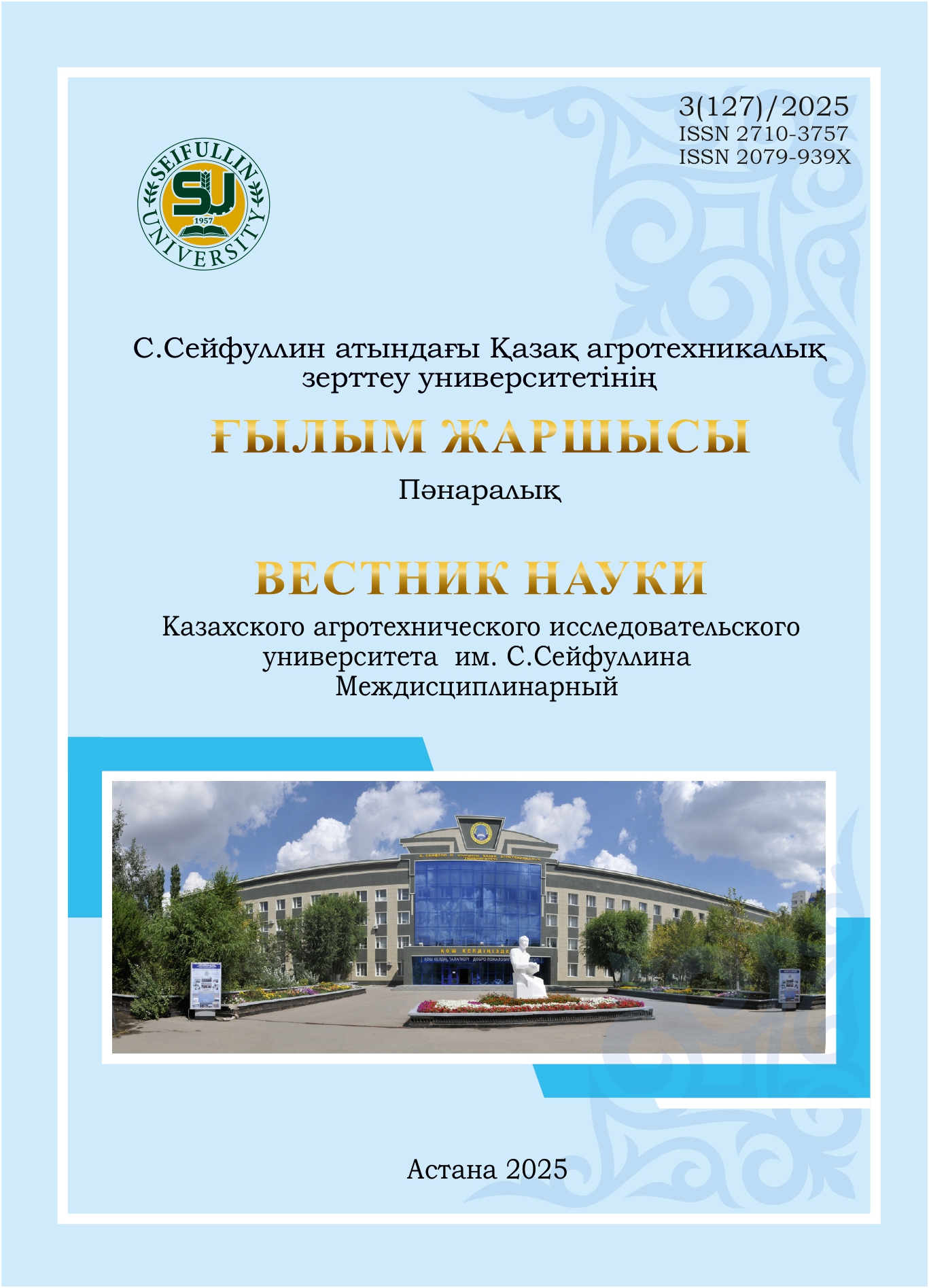Қазақтың Мұғалжар жылқы тұқымының дене тұрқының өзгерісіне LCORL генінің әсері
##plugins.pubIds.doi.readerDisplayName##:
https://doi.org/10.51452/kazatu.2025.3(127).1963Ключевые слова:
LCORL; ген; SNP; генотип; TPM.Аннотация
Алғышарттар мен мақсат. Қазақстанда жылқы шаруашылығы – дәстүрлі әрі маңызды сала. Алайда оны дамыту барысында бірқатар кемшіліктер мен мәселелер кездеседі. Мысалы тұқымды асылдандыру жұмысында генетикалық селекция сирек қолданылады. Сондықтан зерттеу Ligand dependent nuclear receptor corepressor like (бұдан әрі - LCORL) генінің Мұғалжар жылқы тұқымының Ертіс зауыттық типіне жататын «Заман» және «Бақай» аталық іздерінен тараған ұрпақтарының дене тұрқы мен өнімділік көрсеткіштеріне әсерін зерттеп, асыл тұқымды аталықтарды сұрыптауға генетикалық материал жаақтауға бағытталған.
Материалдар мен әдістер. Зерттеуге Абай облысында орналасқан «Азамат 2» Шаруа қожалығындағы Мұғалжар жылқы тұқымының Ертіс зауыттық типіне жататын «Заман» және «Бақай» аталық іздерінен тараған 15 пен 18 ай аралығындағы 52 аталық жылқылардан жүн үлгілері алынып, гентикалық зерттеулер үшін үлгілерден ДНҚ бөлініп, бір нуклеотидті полиморфизм (SNP) әдісі арқылы LCORL геніне ассоциациялық талдау жүргізілді. Зерттеу нәтижесінде өнімділік қасиеттерімен байланысты ген полиморфизмдері анықталды.
Нәтижелер. Біз бір нуклеотидті полиморфизм (SNP) зерттеу нәтижесі бойынша LCORL генінің Мұғалжар жылқы тұқымының геномындағы жалпы ген тізбектерінің g.228 орынындағы C>T гетерозигота мутациясын байқадық яғни SNP C>T, осы SNP мынадай әлелдерге жіктелді: CC, CT және TT болды, аллельдік және генотиптік жиіліктерді талдау g.228 C>T SNP-і HWE-
көрсеткішінен ауытқығанын көрсетті (p < 0,05). Ал SNP-ді қалпына келтіру көрсеткіші орташа полиморфизмді көрсетті (0,25 < PIC < 0,50), генотиптік жилік бойынша CT генотипінің жилігі CC, TT генотиптеріне қарағанда жоғары болды, LCORL генінің g.228 C>T SNP-індегі генотиптер бойынша Мұғалжар жылқы тұқымының дене өлшемдерімен байланысты CT генотипі CC, TT генотиптеріне қарағанда дене өлшемдерінің бойының биіктігі, денесінің қиғаш ұзындығы, кеуде орамы, жіліншік орамы, дене салмағы қатарлы көрсеткіштерінде байланысы жоғары болды. Ал TT генотипі CC генотипіне қарағанда бойының биіктігі, жіліншік орамы, дене салмағы көрсеткіштерінде байланысы жоғары болды.
Қорытынды. Жоғарыда аталған SNP талдау нәтижелеріне сүйене отырып, LCORL гені Қазақтың Мұғалжар жылқы тұқымының Ертіс зауыттық типіне жататын «Заман» және «Бақай» аталық іздерінен тараған ұрпақтарының асыл тұқымдық қасиеттерін одан әрі жақсарту үшін молекулалық маркер ретінде қолданылуы мүмкін. Алайда, бұл геннің жылқы тұқымдарының өнімділік қасиеттеріне әсері әлі де қосымша зерттеуді қажет етеді.

